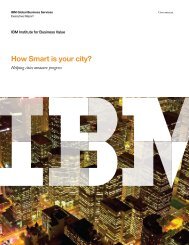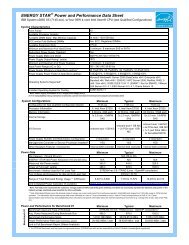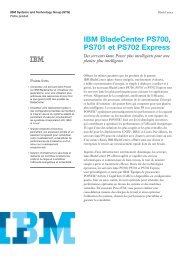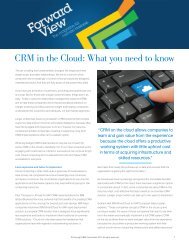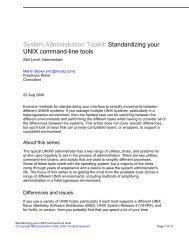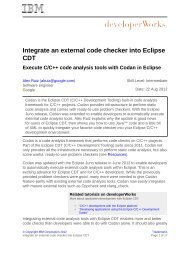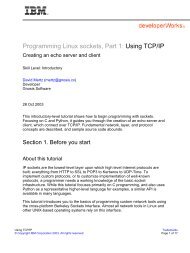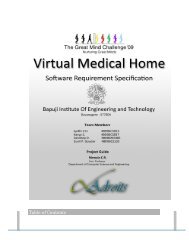Safety-related software development using a model-based ... - IBM
Safety-related software development using a model-based ... - IBM
Safety-related software development using a model-based ... - IBM
Create successful ePaper yourself
Turn your PDF publications into a flip-book with our unique Google optimized e-Paper software.
ibm.com/developerWorks/ developerWorks®<br />
Fault injection test Recommended Recommended Recommended Highly recommended<br />
Resource usage test Recommended Recommended Recommended Highly recommended<br />
Back-to-back test Recommended Recommended Highly Recommended Highly recommended<br />
Requirements-<strong>based</strong> testing is highly recommended for ASIL A to D. In other words,<br />
requirements-<strong>based</strong> testing is mandatory. Requirements <strong>based</strong> testing is hence an<br />
important verification activity in the Rational Rhapsody Reference workflow, too.<br />
Figure 2. Performing requirements-<strong>based</strong> testing with the Rational Rhapsody<br />
TestConductor Add On<br />
During requirements-<strong>based</strong> testing, you need to systematically verify whether the<br />
system under test (SUT) behaves as specified in the requirements defined for it. For<br />
each requirement one or more test cases must be defined that check the behavior<br />
of the SUT. <strong>IBM</strong> Rational Rhapsody offers four different ways to specify the behavior<br />
of test cases: sequence diagrams, statecharts, activity diagrams, and plain code.<br />
Depending on the requirement to be checked, one of these formalisms might be<br />
more suitable than others. For example, suppose that the SUT is a <strong>model</strong> of a<br />
stopwatch. This is one of the requirements of the stopwatch:<br />
"REQ_INIT: After starting the stopwatch, the stopwatch shall display 0<br />
minutes and 0 seconds (0:0)".<br />
To verify and test this requirement with <strong>IBM</strong> Rational Rhapsody, you can create a<br />
sequence diagram test, as depicted in Figure 3. First, this input is sent to the SUT:<br />
evPressKey(KeyVal=1)<br />
This input means that the stopwatch is started. As the expected reaction, the<br />
sequence diagram specifies that the SUT shall emit this event:<br />
evShow(m=0,s=0,b=FALSE)<br />
<strong>Safety</strong>-<strong>related</strong> <strong>software</strong> <strong>development</strong> <strong>using</strong> a <strong>model</strong><strong>based</strong><br />
testing workflow<br />
Page 5 of 13



